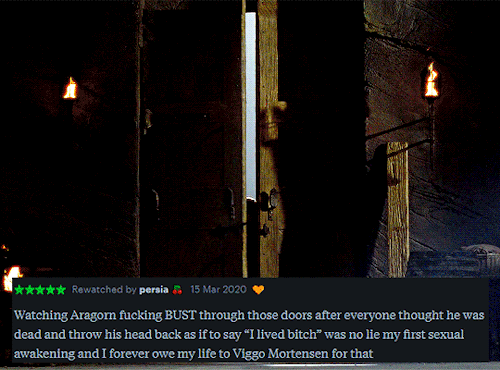
Tim | it/they/he | INFJ | chaotic evil | ravenclaw | here for a good time not for a long time
184 posts
Latest Posts by boozedcowboy - Page 2
holy fucking shit op this is raw emotion
Any suggestions/inspiration for a STEM-focused, dark academia aesthetic? I'm something of a reformed humanities student finishing an engineering degree this time around.
I think STEM in Dark Academia is an underappreciated aesthetic. The humanities seek to understand what it is to be human, and this is a complex venture indeed. But studying STEM means you seek to understand the world around you. And my God, are there mysteries to be uncovered. Let’s go down the list together, shall we?
SCIENCE.
Latin words fall from your lips as easily as a prayer, and isn’t there piety in this? Devotion, worship? There must be, for you to be able to dig your hands into the breathing body of the world around you and have it speak back. Messily scrawled chemical equations are practically tattooed onto your arms and hands, and sometimes you wake with the molecular structure of a human red blood cell drawn carefully on your heart with no memory of putting it there, but it moves with the pulse of your heart. Bubbling beakers and plumes of emerald, cobalt, violet flame. Faded lab coats. Hair cut short or pulled back neatly, not a single tendril hanging down. Dirt under fingernails, sleeves rolled up and out of the way. You know poisons, toxins, you know the pump of blood through arteries, you know how close we are to death, and you know how it feels to hold the hand of human long dead, still cold from the cooler. Death hates you, because you are helping humanity evade it.
TECHNOLOGY.
Lines and lines of code stare back at you from the over-bright screen of your monitor. You know, you know that we could be more, that the future is a few keystrokes away if only you can organize your tumbling thoughts and the wall of symbols in front of you. You like the way robots move; tiny, carefully planned, yet oh so jerky motions that can’t help but remind you of when a baby deer takes its first quivering steps. You think humans were like this once, in the beginning. You think the movement in a motor resembles the inner workings of a human heart. You imagine the veins that pump blood through your body as wires on a circuit board delivering electricity from one place to another. Leather shoes laced as tightly as possible, tiny blueprints doodled on the soles. Bronze bells hanging from a bedroom window, a crumbled silk shirt. How far can you push at the boundaries of what is possible before something breaks? Will it be you or reality that gives first?
ENGINEERING.
What is it about the smoothing of clay into shapes that makes humanity stop and say, “This must be what it feels like to be God”? How much more can you feel it, with the power in your fingertips and in the corners of your mind to make things humans could never do? To push civilization past its breaking point and remake it anew, better, stronger, more than God ever did? What is the difference between man and machine, and should you even care in the first place? You are like God alright, you are participating in something divine, something holy. You double check every equation and think about what it means to be alive. You decide that, in the ever moving cogs of this great clock, you will be the first piece that moves, the one that pushes the others to succeed. Pencils stabbed into messy buns, lipstick stains on pale coffee cup rims. Your eyes are sharp and focused, but your thoughts are ever moving and desperate with desire to create, to bound forward into the future you are oh so carefully envisioning, every piece laid out and pinned down within an inch of its life. Children are starving, the world is burning, and you can do something, you can fix this, because if you don't, who else can? Who else will?
MATHEMATICS.
What is math? A meaningless formal game. Above the door at Plato’s Academy were inscribed the words, “Let no one enter here who is ignorant of geometry.” How can it be that both are true? A secret language exists that no one is born into, but is available to all willing to learn. Astronomy, the constant ever cycling of the universe around us, our own home a puzzle piece in a cosmic dance. Meandering lines of equations that are beautiful, beautiful, because you know what they mean and they speak to you, they sing. You write them with calligraphy pens and hang them above your desk, they are as much an expression of the human condition as a Picasso; show our creativity more than a Monet. Hands dirty from dragging them over cramped pages of numbers and graphite dust, equations traced into the foggy glass of your favorite coffee shop, messy hair and bitten down nails, math pun t-shirts under tweed blazers, the theory of relativity scrawled sloppily on your knee, the world around you the sum of shapes and numbers and you can see it, you can hear it.
STEM in Dark Academia is nonstop in its restlessness. There is always more to be discovered, further to push, limits that can and will be broken. There is a darkness to that beauty, a madness that permeates the cracks of every field. A historian could have told you not to make the atom bomb. A scientist can’t help themself from seeing how much destruction is possible.
some things i’ve learned while studying in quarantine
drink more water instead of more coffee.
weekly goals are bullshit. set yourself 3-day goals. you’ll be less laid-back.
don’t just mindlessly stare at words. before you start studying, know your approach to it. have a plan.
summarizing the concept in your own words is the key part of taking notes. don’t just copy things down, convert them into your own way of talking, your own vocabulary, no matter how dumb and unprofessional it sounds.
don’t let the “studyblr aesthetic” fool you. studying doesn’t have to be pretty. summaries and notes can be messy as long as they’re comprehensible. you can always rewrite and reorganize them later. (honestly, you better do. and you better keep them.)
don’t throw away the papers you’ve solved your problems in. staple them to the fucking textbook. you need to see them constantly. cause you’ll need reminders of how far you’ve came, when you’re feeling discouraged.
don’t be an armchair analyst for your issues. if you have an idea then act on it.
remember: the exact point where it becomes difficult, is where your growth begins. take a deep breath, and try to focus on the paragraph in front of you.
get off your high horse and understand that if you’re a zero, you won’t go to 100 in a couple of days. first, you’ll need to reach 30, then from 30 to 60, and then from 60 to 90. nobody is 100 everyday. that happens very rarely.
you need to have fun everyday. you need to have peaceful time every single day. even on exam night. especially on exam night, actually. so make sure you’ve studied enough so you can have some time to yourself.
once you’re on a roll and in need of some challenge to stay on track, start writing down your studying hours. tell yourself you’re not allowed to do less than 80% of what you did yesterday. whatever the hell it was, even just one hour. so if yesterday you really studied for like, say 8 hours, today your goal is to study for at least 6 and a half hours. if you can’t keep up with that, make it 70%, or 60%.
be forgiving of yourself. be kind to yourself. even if you bounced back and lost your streak. start again. as slowly as you did before. take your time. it’s okay, you were there once you can get there again.
Me studying for my math exam like










Astronomers image magnetic fields at the edge of M87’s black hole
The Event Horizon Telescope (EHT) collaboration, who produced the first ever image of a black hole, has today revealed a new view of the massive object at the centre of the Messier 87 (M87) galaxy: how it looks in polarised light.
This is the first time astronomers have been able to measure polarisation, a signature of magnetic fields, this close to the edge of a black hole.
The observations are key to explaining how the M87 galaxy, located 55 million light-years away, is able to launch energetic jets from its core.
“We are now seeing the next crucial piece of evidence to understand how magnetic fields behave around black holes, and how activity in this very compact region of space can drive powerful jets that extend far beyond the galaxy,” says Monika Mościbrodzka, Coordinator of the EHT Polarimetry Working Group and Assistant Professor at Radboud University in the Netherlands.
On 10 April 2019, scientists released the first ever image of a black hole, revealing a bright ring-like structure with a dark central region — the black hole’s shadow.
Since then, the EHT collaboration has delved deeper into the data on the supermassive object at the heart of the M87 galaxy collected in 2017.
They have discovered that a significant fraction of the light around the M87 black hole is polarised.
“This work is a major milestone: the polarisation of light carries information that allows us to better understand the physics behind the image we saw in April 2019, which was not possible before,” explains Iván Martí-Vidal, also Coordinator of the EHT Polarimetry Working Group and GenT Distinguished Researcher at the University of Valencia, Spain.
He adds that “unveiling this new polarised-light image required years of work due to the complex techniques involved in obtaining and analysing the data.”
Light becomes polarised when it goes through certain filters, like the lenses of polarised sunglasses, or when it is emitted in hot regions of space where magnetic fields are present.
In the same way that polarised sunglasses help us see better by reducing reflections and glare from bright surfaces, astronomers can sharpen their view of the region around the black hole by looking at how the light originating from it is polarised.
Specifically, polarisation allows astronomers to map the magnetic field lines present at the inner edge of the black hole.
“The newly published polarised images are key to understanding how the magnetic field allows the black hole to ‘eat’ matter and launch powerful jets,” says EHT collaboration member Andrew Chael, a NASA Hubble Fellow at the Princeton Center for Theoretical Science and the Princeton Gravity Initiative in the US.
The bright jets of energy and matter that emerge from M87’s core and extend at least 5000 light-years from its centre are one of the galaxy’s most mysterious and energetic features.
Most matter lying close to the edge of a black hole falls in.
However, some of the surrounding particles escape moments before capture and are blown far out into space in the form of jets.
Astronomers have relied on different models of how matter behaves near the black hole to better understand this process.
But they still don’t know exactly how jets larger than the galaxy are launched from its central region, which is comparable in size to the Solar System, nor how exactly matter falls into the black hole.
With the new EHT image of the black hole and its shadow in polarised light, astronomers managed for the first time to look into the region just outside the black hole where this interplay between matter flowing in and being ejected out is happening.
The observations provide new information about the structure of the magnetic fields just outside the black hole.
The team found that only theoretical models featuring strongly magnetised gas can explain what they are seeing at the event horizon.
“The observations suggest that the magnetic fields at the black hole’s edge are strong enough to push back on the hot gas and help it resist gravity’s pull.
Only the gas that slips through the field can spiral inwards to the event horizon,” explains Jason Dexter, Assistant Professor at the University of Colorado Boulder, US, and Coordinator of the EHT Theory Working Group.
To observe the heart of the M87 galaxy, the collaboration linked eight telescopes around the world — including the northern Chile-based Atacama Large Millimeter/submillimeter Array (ALMA) and the Atacama Pathfinder EXperiment (APEX), in which the European Southern Observatory (ESO) is a partner — to create a virtual Earth-sized telescope, the EHT.
The impressive resolution obtained with the EHT is equivalent to that needed to measure the length of a credit card on the surface of the Moon.
“With ALMA and APEX, which through their southern location enhance the image quality by adding geographical spread to the EHT network, European scientists were able to play a central role in the research,” says Ciska Kemper, European ALMA Programme Scientist at ESO.
“With its 66 antennas, ALMA dominates the overall signal collection in polarised light, while APEX has been essential for the calibration of the image.”
“ALMA data were also crucial to calibrate, image and interpret the EHT observations, providing tight constraints on the theoretical models that explain how matter behaves near the black hole event horizon,” adds Ciriaco Goddi, a scientist at Radboud University and Leiden Observatory, the Netherlands, who led an accompanying study that relied only on ALMA observations.
The EHT setup allowed the team to directly observe the black hole shadow and the ring of light around it, with the new polarised-light image clearly showing that the ring is magnetised.
The results are published today in two separate papers in The Astrophysical Journal Letters by the EHT collaboration.
The research involved over 300 researchers from multiple organisations and universities worldwide.
“The EHT is making rapid advancements, with technological upgrades being done to the network and new observatories being added.
We expect future EHT observations to reveal more accurately the magnetic field structure around the black hole and to tell us more about the physics of the hot gas in this region,” concludes EHT collaboration member Jongho Park, an East Asian Core Observatories Association Fellow at the Academia Sinica Institute of Astronomy and Astrophysics in Taipei.
More information
This research was presented in two papers by the EHT collaboration published today in The Astrophysical Journal Letters: “First M87 Event Horizon Telescope Results VII: Polarization of the Ring” (doi: 10.3847/2041-8213/abe71d) and “First M87 Event Horizon Telescope Results VIII: Magnetic Field Structure Near The Event Horizon” (doi: 10.3847/2041-8213/abe4de).
Accompanying research is presented in the paper “Polarimetric properties of Event Horizon Telescope targets from ALMA” (doi: 10.3847/2041-8213/abee6a) by Goddi, Martí-Vidal, Messias, and the EHT collaboration, which has been accepted for publication in The Astrophysical Journal Letters.
The EHT collaboration involves more than 300 researchers from Africa, Asia, Europe, North and South America.
The international collaboration is working to capture the most detailed black hole images ever obtained by creating a virtual Earth-sized telescope.
Supported by considerable international investment, the EHT links existing telescopes using novel systems — creating a fundamentally new instrument with the highest angular resolving power that has yet been achieved.
The individual telescopes involved are: ALMA, APEX, the Institut de Radioastronomie Millimetrique (IRAM) 30-meter Telescope, the IRAM NOEMA Observatory, the James Clerk Maxwell Telescope (JCMT), the Large Millimeter Telescope (LMT), the Submillimeter Array (SMA), the Submillimeter Telescope (SMT), the South Pole Telescope (SPT), the Kitt Peak Telescope, and the Greenland Telescope (GLT). The EHT consortium consists of 13 stakeholder institutes: the Academia Sinica Institute of Astronomy and Astrophysics, the University of Arizona, the University of Chicago, the East Asian Observatory, Goethe-Universitaet Frankfurt, Institut de Radioastronomie Millimétrique, Large Millimeter Telescope, Max Planck Institute for Radio Astronomy, MIT Haystack Observatory, National Astronomical Observatory of Japan, Perimeter Institute for Theoretical Physics, Radboud University and the Smithsonian Astrophysical Observatory.
ESO is the foremost intergovernmental astronomy organisation in Europe and the world’s most productive ground-based astronomical observatory by far. It has 16 Member States: Austria, Belgium, the Czech Republic, Denmark, France, Finland, Germany, Ireland, Italy, the Netherlands, Poland, Portugal, Spain, Sweden, Switzerland and the United Kingdom, along with the host state of Chile and with Australia as a Strategic Partner. ESO carries out an ambitious programme focused on the design, construction and operation of powerful ground-based observing facilities enabling astronomers to make important scientific discoveries. ESO also plays a leading role in promoting and organising cooperation in astronomical research. ESO operates three unique world-class observing sites in Chile: La Silla, Paranal and Chajnantor. At Paranal, ESO operates the Very Large Telescope and its world-leading Very Large Telescope Interferometer as well as two survey telescopes, VISTA working in the infrared and the visible-light VLT Survey Telescope. Also at Paranal ESO will host and operate the Cherenkov Telescope Array South, the world’s largest and most sensitive gamma-ray observatory. ESO is also a major partner in two facilities on Chajnantor, APEX and ALMA, the largest astronomical project in existence. And on Cerro Armazones, close to Paranal, ESO is building the 39-metre Extremely Large Telescope, the ELT, which will become “the world’s biggest eye on the sky”.
The Atacama Large Millimeter/submillimeter Array (ALMA), an international astronomy facility, is a partnership of ESO, the U.S. National Science Foundation (NSF) and the National Institutes of Natural Sciences (NINS) of Japan in cooperation with the Republic of Chile. ALMA is funded by ESO on behalf of its Member States, by NSF in cooperation with the National Research Council of Canada (NRC) and the Ministry of Science and Technology (MOST) and by NINS in cooperation with the Academia Sinica (AS) in Taiwan and the Korea Astronomy and Space Science Institute (KASI). ALMA construction and operations are led by ESO on behalf of its Member States; by the National Radio Astronomy Observatory (NRAO), managed by Associated Universities, Inc. (AUI), on behalf of North America; and by the National Astronomical Observatory of Japan (NAOJ) on behalf of East Asia. The Joint ALMA Observatory (JAO) provides the unified leadership and management of the construction, commissioning and operation of ALMA.
The BlackHoleCam research group was awarded the European Research Council €14 million Synergy Grant in 2013. The Principal Investigators are Heino Falcke, Luciano Rezzolla and Michael Kramer and the partner institutes are JIVE, IRAM, MPE Garching, IRA/INAF Bologna, SKA and ESO. BlackHoleCam is part of the Event Horizon Telescope collaboration.
IMAGE 1….The Event Horizon Telescope (EHT) collaboration, who produced the first ever image of a black hole released in 2019, has today a new view of the massive object at the centre of the Messier 87 (M87) galaxy: how it looks in polarised light. This is the first time astronomers have been able to measure polarisation, a signature of magnetic fields, this close to the edge of a black hole. This image shows the polarised view of the black hole in M87. The lines mark the orientation of polarisation, which is related to the magnetic field around the shadow of the black hole. Credit: EHT Collaboration
IMAGE 2….This composite image shows three views of the central region of the Messier 87 (M87) galaxy in polarised light. The galaxy has a supermassive black hole at its centre and is famous for its jets, that extend far beyond the galaxy. One of the polarised-light images, obtained with the Chile-based Atacama Large Millimeter/submillimeter Array (ALMA), in which ESO is a partner, shows part of the jet in polarised light. This image captures the part of the jet, with a size of 6000 light years, closer to the centre of the galaxy. The other polarised light images zoom in closer to the supermassive black hole: the middle view covers a region about one light year in size and was obtained with the National Radio Astronomy Observatory’s Very Long Baseline Array (VLBA) in the US. The most zoomed-in view was obtained by linking eight telescopes around the world to create a virtual Earth-sized telescope, the Event Horizon Telescope or EHT. This allows astronomers to see very close to the supermassive black hole, into the region where the jets are launched. The lines mark the orientation of polarisation, which is related to the magnetic field in the regions imaged.The ALMA data provides a description of the magnetic field structure along the jet. Therefore the combined information from the EHT and ALMA allows astronomers to investigate the role of magnetic fields from the vicinity of the event horizon (as probed with the EHT on light-day scales) to far beyond the M87 galaxy along its powerful jets (as probed with ALMA on scales of thousand of light-years). The values in GHz refer to the frequencies of light at which the different observations were made. The horizontal lines show the scale (in light years) of each of the individual images. Credit: EHT Collaboration; ALMA (ESO/NAOJ/NRAO), Goddi et al.; VLBA (NRAO), Kravchenko et al.; J. C. Algaba, I. Martí-Vidal
IMAGE 3…. This composite image shows three views of the central region of the Messier 87 (M87) galaxy in polarised light and one view, in the visible wavelength, taken with the Hubble Space Telescope. The galaxy has a supermassive black hole at its centre and is famous for its jets, that extend far beyond the galaxy. The Hubble image at the top captures a part of the jet some 6000 light years in size. One of the polarised-light images, obtained with the Chile-based Atacama Large Millimeter/submillimeter Array (ALMA), in which ESO is a partner, shows part of the jet in polarised light. This image captures the part of the jet, with a size of 6000 light years, closer to the centre of the galaxy. The other polarised light images zoom in closer to the supermassive black hole: the middle view covers a region about one light year in size and was obtained with the National Radio Astronomy Observatory’s Very Long Baseline Array (VLBA) in the US. The most zoomed-in view was obtained by linking eight telescopes around the world to create a virtual Earth-sized telescope, the Event Horizon Telescope or EHT. This allows astronomers to see very close to the supermassive black hole, into the region where the jets are launched. The lines mark the orientation of polarisation, which is related to the magnetic field in the regions imaged. The ALMA data provides a description of the magnetic field structure along the jet. Therefore the combined information from the EHT and ALMA allows astronomers to investigate the role of magnetic fields from the vicinity of the event horizon (as probed with the EHT on light-day scales) to far beyond the M87 galaxy along its powerful jets (as probed with ALMA on scales of thousand of light-years). The values in GHz refer to the frequencies of light at which the different observations were made. The horizontal lines show the scale (in light years) of each of the individual images. Credit: EHT Collaboration; ALMA (ESO/NAOJ/NRAO), Goddi et al.; NASA, ESA and the Hubble Heritage Team (STScI/AURA); VLBA (NRAO), Kravchenko et al.; J. C. Algaba, I. Martí-Vidal
IMAGE 4….This image shows a view of the jet in the Messier 87 (M87) galaxy in polarised light. The image was obtained with the Chile-based Atacama Large Millimeter/submillimeter Array (ALMA), in which ESO is a partner, and captures the part of the jet, with a size of 6000 light years, closer to the centre of the galaxy. The lines mark the orientation of polarisation, which is related to the magnetic field in the region imaged. This ALMA image therefore indicates what the structure of the magnetic field along the jet looks like. Credit: ALMA (ESO/NAOJ/NRAO), Goddi et al.
IMAGE 5….The Event Horizon Telescope (EHT) — a planet-scale array of eight ground-based radio telescopes forged through international collaboration — was designed to capture images of a black hole. In coordinated press conferences across the globe, EHT researchers revealed that they succeeded, unveiling the first direct visual evidence of the supermassive black hole in the centre of Messier 87 and its shadow. The shadow of a black hole seen here is the closest we can come to an image of the black hole itself, a completely dark object from which light cannot escape. The black hole’s boundary — the event horizon from which the EHT takes its name — is around 2.5 times smaller than the shadow it casts and measures just under 40 billion km across. While this may sound large, this ring is only about 40 microarcseconds across — equivalent to measuring the length of a credit card on the surface of the Moon. Although the telescopes making up the EHT are not physically connected, they are able to synchronize their recorded data with atomic clocks — hydrogen masers — which precisely time their observations. These observations were collected at a wavelength of 1.3 mm during a 2017 global campaign. Each telescope of the EHT produced enormous amounts of data – roughly 350 terabytes per day – which was stored on high-performance helium-filled hard drives. These data were flown to highly specialised supercomputers — known as correlators — at the Max Planck Institute for Radio Astronomy and MIT Haystack Observatory to be combined. They were then painstakingly converted into an image using novel computational tools developed by the collaboration. Credit: EHT Collaboration
IMAGE 6….Messier 87 (M87) is an enormous elliptical galaxy located about 55 million light years from Earth, visible in the constellation Virgo. It was discovered by Charles Messier in 1781, but not identified as a galaxy until 20th Century. At double the mass of our own galaxy, the Milky Way, and containing as many as ten times more stars, it is amongst the largest galaxies in the local universe. Besides its raw size, M87 has some very unique characteristics. For example, it contains an unusually high number of globular clusters: while our Milky Way contains under 200, M87 has about 12,000, which some scientists theorise it collected from its smaller neighbours. Just as with all other large galaxies, M87 has a supermassive black hole at its centre. The mass of the black hole at the centre of a galaxy is related to the mass of the galaxy overall, so it shouldn’t be surprising that M87’s black hole is one of the most massive known. The black hole also may explain one of the galaxy’s most energetic features: a relativistic jet of matter being ejected at nearly the speed of light. The black hole was the object of paradigm-shifting observations by the Event Horizon Telescope. The EHT chose the object as the target of its observations for two reasons. While the EHT’s resolution is incredible, even it has its limits. As more massive black holes are also larger in diameter, M87’s central black hole presented an unusually large target—meaning that it could be imaged more easily than smaller black holes closer by. The other reason for choosing it, however, was decidedly more Earthly. M87 appears fairly close to the celestial equator when viewed from our planet, making it visible in most of the Northern and Southern Hemispheres. This maximised the number of telescopes in the EHT that could observe it, increasing the resolution of the final image. This image was captured by FORS2 on ESO’s Very Large Telescope as part of the Cosmic Gems programme, an outreach initiative that uses ESO telescopes to produce images of interesting, intriguing or visually attractive objects for the purposes of education and public outreach. The programme makes use of telescope time that cannot be used for science observations, and produces breathtaking images of some of the most striking objects in the night sky. In case the data collected could be useful for future scientific purposes, these observations are saved and made available to astronomers through the ESO Science Archive. Credit: ESO
IMAGE 7….This chart shows the position of giant galaxy Messier 87 in the constellation of Virgo (The Virgin). The map shows most of the stars visible to the unaided eye under good conditions. Credit: ESO, IAU and Sky & Telescope
IMAGE 8….This image shows the contribution of ALMA and APEX to the EHT. The left hand image shows a reconstruction of the black hole image using the full array of the Event Horizon Telescope (including ALMA and APEX); the right-hand image shows what the reconstruction would look like without data from ALMA and APEX. The difference clearly shows the crucial role that ALMA and APEX played in the observations. Credit: EHT Collaboration
IMAGE 9….This artist’s impression depicts the black hole at the heart of the enormous elliptical galaxy Messier 87 (M87). This black hole was chosen as the object of paradigm-shifting observations by the Event Horizon Telescope. The superheated material surrounding the black hole is shown, as is the relativistic jet launched by M87’s black hole. Credit: ESO/M. Kornmesser
I am an engineering student who is also obsessed with dark academia and honestly it’s a lifeline at this point. Romanticizing education helps me deal with the stress of it all and makes me not wanna unaliven’t myself 😃
Here are some things I enjoy about being a STEM major (idk if these classify as dark academia but we’ll go with it):
-First and foremost, Vivaldi. Specifically, Storm. Listening to that piece while doing your work will make you feel like a mad scientist.
Pouring over math, pouring over biology lab work, practicing on a cadaver, anything.
Put that song on and bam, pretentious mad scientist whose on the brink of discovering something that will shatter the scientific community, or quite literally, shatter the world. I never said they were a good person, did I?
- Starting different journals for different subjects. Anatomy, botanicals, chemistry, biology, quantum physics, anything. Just writing, drawing, and sketching and genuinely enjoying learning about all these topics. You never know when it could come in handy.
-Wanting to become the Tony Stark of our times (not the war crimes but the innovation and knowledge) and always daydreaming about creating something magnificient. Maybe you could create an iron suit one day, a real life, fully functioning one.
-Continuing with wanting to become Tony Stark, obsessing over electrical engineering and astrophysics. Learning about flight, the atmosphere, how to build and create flight vehicles, and having millions of sketches of aircrafts on your desk and all over your walls.
-Talking about flight, can we talk about Da Vinci? Growing up obsessed with him and pouring over his artwork and scientific studies. You felt and still feel understood by him. He combines your love for the arts and your love for science beautifully. Wishing you could live in the reinassance era, being a pupil, studying under all of these talented people.
Btw, you’re still obsessed with him. Yes, till now.
-From Da Vinci, discovering Galileo, Michelangelo, Raphael, Donatello, and falling in love with their works. Eventually developing an obsession with the reinassance era in its entirety and basically memorizing the entire timeline and historic events of that time period.
-Visiting as many libraries as you can with the countries you visit. Personally, the most magnificent library I’ve seen is the Bibliotheca Alexandrina.
-Having an ancient mythology obsession. Ancient Egypt, Ancient Greece, Ancient Rome, Ancient Persia, Ancient China, Norse mythology, anything you could get your hands on. These stories shaped your childhood and are still very dear to your heart.
-Hating the idea of monolithic religions from a young age (mainly because of religious trauma) and deciding to rebel by praying to ancient gods. Nothing big.
For me personally, it’s Greek gods. A small prayer to Athena when I’m cleaning or using olive oil or crocheting. A lil prayer to Aphrodite when I’m doing my makeup or skincare. A lil prayer to Artemis when I go shooting. It’s an act of defiance and makes me happy. What’s better than that?
-Also, hating the academic world yet wanting to participate in it. I mean you honestly hate the world at this point but let’s just focus on this. It’s so pretentious and exclusive and misguiding/misleading most of the time. Also, the fact that white, old men are at the top doesn’t really help.
-From that, having an intense hatred for the collegeboard. Going on rants about how pointless and stupid these standardized tests are. I mean, what’s the point of it? Give me one solid reason we take them. Go on, I’m waiting.
-Taking programming for the first time and just simply hating it but also secretly loving it. I mean, there’s nothing more satisfying than submitting your coding assignment and getting an A but those goddamn punctuation signs (idk what else to call them).
Imagine finishing your code then running it and it tells you there’s an error. You search for hours and hours and then finally realise, you wrote ‘}’ instead of ‘]’. A breakdown is on its way.
This just a huge rant lol. It’s what I’ve been doing for the past month so idk? Let’s hope this is relatable. Also idk how to use tags someone pls teach me 😃✋
STEM DARK ACADEMIA
I'm a little upset at the lack of stem in dark academia, so here's my list of aesthetic science things, STEM ACADEMIA (dark edition)
• relating a little too much to the mad scientist trope (and telling everyone "no, no I would never do anything like that, I just want to help people" but like imagine if we could resurrect people)
• rereading Frankenstein every year, specifically in the month of october
• "why is STEAM a thing?? Art? who that?"
• minoring in classics because you still like mythology and history and reading
• finding the science in art (why things make you feel a certain way, how they do that, what effect they've had on health and medicine) and finding the art in science (isn't it incredible that dna knows how to tell plant cells to break down chlorophyll and this makes the gorgeous fall colors)
• reading every book that mentions at all a scientist or has a character who is interested in stem (they are few and far between)
• enjoying the structure of math and engineering but thriving off the chaos that is science
• where are the mad scientist women? I need this
• people being surprised when you tell them you're majoring in something "really science-y" after being an absolute bookworm and musician all throughout your childhood and having to defend what your heart desires (no? just me?)
• CARDIGANS are peak stem culture
• "why aren't you a doctor? why aren't you going to med school? why are you doing insert reasonable science degree here and not becoming a doctor? don't you want to help people?"
• wanting to go into genetics but wanting to go into botany but wanting to go into theoretical physics but wanting to go into astronomy but wanting to go into geology but wanting to go into chemical engineering but wanting to go into astrophysics but wanting to go into wildlife biology
• for some reason having a huge obsession with morals, ethics, and philosophy
• watching true crime just for the forensic bits
• watching mythbusters as a kid
• LISTENING TO TCHAIKOVSKY, BEETHOVEN, BACH, AND MOZART those are the stem classical musicians change my mind
• doing all your homework and frying your brain then getting to read a simple book that really refreshes you
• you had the astronomy and archaeology obsession as a kid
• listening to synth wave instrumentals
• MITOCHONDRIA IS THE POWERHOUSE OF THE CELL
• when people tell you that one cool science fact they learned and you try your hardest to encourage them but girl that wasn't even close to being correct
• ScienceDirect and PubMed are your go-to databases
• having lots of intrusive, existential thoughts that sometimes suffocate you, because you know better than most how much dark dna there is or how small we really are in the universe or knowing how much math explains and how little room there is for free will or thinking about how we are made up of mostly four types of atoms
• reading science or math textbooks for fun
• reading the fountainhead by ayn rand when you were way too young and didn't understand it but now parts of it emerge from the depths of your memory and you are struck by the power
• watching marvel and x-men and jurassic park just because
• reading sci-fi because it's the closest thing to real science in literature
• knowing a little too much about radiation poisoning and how to really dissolve a body in chemicals
• wearing white to make up for how little your professors make you wear lab coats
(sorry, I don't know that much about technology and I'm a literal grandpa when it comes to using it myself)
Saw someone put Physics in Light Academia..
Let me tell you that Physics is so Dark Academia, trust me, a subject where you constantly are confronted with the edges of reality, the limits of human understanding and delving into places where everything you think is normal stops working, where everything starts to become so unintuitive that it is impossible to wrap your head around it, where you can only to try and begin to understand it using the language of mathematics
From the smallest particles of the universe to the large scale structures of the cosmos, Physics just reaches the ultimate limits of time and space!
This is why I think it is peak Dark Academia
An accurate description of the life of a 1st year astrophysics major:
going to class and your professor talking fondly about the "wonderful feeling after the elevator cable snaps while you're in it"
said professor then proceeding to play a rock song
on most days only expect 2-5 students in class even though we have 13
where did the others go?? nobody knows, maybe they were abducted by aliens
speaking of aliens
your other professor pausing class to talk about what would happen if we met them
and getting mildly upset that an asteroid is no longer headed towards earth
cats
just so many physics department cats
and celebrating their birthdays
nobody in the department sleeps
don't be alarmed when your professor goes to the group chat at 3am to talk about whatever
hating elon musk
somehow other majors don't think astrophysics majors actually attend school until they meet you
there are days where we only talk about why star trek wasn't safe (they never wore seatbelts for a long time!!)
we like frogs
and rocks
rock go brrrr
sometimes finding your professor's face photoshopped onto satellites
working for hours but having 0 progress
your prof. assuring you that this is normal even for professionals
random scifi talks and book recs
cats
everyone in the dept likes greek letters
getting back to your dorm at almost midnight
the hall is eerily quiet but nobody is asleep
crying over the moon is normal
so is crying over the mars rovers
crying in general is normal
your professor saying odd things like
"this is just some weird image of two people about to die- but anyway, spacetime"
the astronomers of the school are also the astrologers
setting up in the lounge reading people's birth charts and astro cards
having to sneak through the back of the building because our id cards never work
sitting in the observatory with the lights off waiting for the professor to get there
planning to bring your hallmates to the planetarium to impress them
did i mention the cats?
meow
why do we have things that glow?
and this????

idk might make a pt. 2 or not
Essays
Here’s a (non-exhaustive) list of essays I like/find interesting/are food for thought; I’ve tried to sort them as much as possible. The starred (*) ones are those I especially love
also quick note: some of these links, especially the ones that are from books/anthologies redirect you to libgen or scihub, and if that doesn’t work for you, do message me; I’d be happy to send them across!
Literature + Writing
Godot Comes to Sarajevo - Susan Sontag
The Strangeness of Grief - V. S. Naipaul*
Memories of V. S. Naipaul - Paul Theroux*
A Rainy Day with Ruskin Bond - Mayank Austen Soofi
How Albert Camus Faced History - Adam Gopnik
Listen, Bro - Jo Livingstone
Rachel Cusk Gut-Renovates the Novel - Judith Thurman
Lost in Translation: What the First Line of “The Stranger” Should Be - Ryan Bloom
The Duke in His Domain - Truman Capote*
The Cult of Donna Tartt: Themes and Strategies in The Secret History - Ana Rita Catalão Guedes
Never Do That to a Book - Anne Fadiman*
Affecting Anger: Ideologies of Community Mobilisation in Early Hindi Novel - Rohan Chauhan*
Why I Write - George Orwell*
Rimbaud and Patti Smith: Style as Social Deviance - Carrie Jaurès Noland*
Art + Photography (+ Aesthetics)
Looking at War - Susan Sontag*
Love, sex, art, and death - Nan Goldin, David Wojnarowicz
Lyons, Szarkowski, and the Perception of Photography - Anne Wilkes Tucker
The Feminist Critique of Art History - Thalia Gouma-Peterson, Patricia Mathews
In Plato’s Cave - Susan Sontag*
On reproduction of art (Chapter 1, Ways of Seeing) - John Berger*
On nudity and women in art (Chapter 3, Ways of Seeing) - John Berger*
Kalighat Paintings - Sharmishtha Chaudhuri
Daydreams and Fragments: On How We Retrieve Images From the Past - Maël Renouard
Arthur Rimbaud: the Aesthetics of Intoxication - Enid Rhodes Peschel
Cities
Tragic Fable of Mumbai Mills - Gyan Prakash
Whose Bandra is it? - Dustin Silgardo*
Timur’s Registan: noblest public square in the world? - Srinath Perur
The first Starbucks coffee shop, Seattle - Colin Marshall*
Chhatrapati Shivaji Terminus, Mumbai’s iconic railway station - Srinath Perur
From London to Mumbai and Back Again: Gentrification and Public Policy in Comparative Perspective - Andrew Harris
The Limits of “White Town” in Colonial Calcutta - Swati Chattopadhyay
The Metropolis and Mental Life - Georg Simmel
Colonial Policy and the Culture of Immigration: Citing the Social History of Varanasi - Vinod Kumar, Shiv Narayan
A Caribbean Creole Capital: Kingston, Jamaica - Coln G. Clarke (from Colonial Cities by Robert Ross, Gerard J. Telkamp
The Colonial City and the Post-Colonial World - G. A. de Bruijne
The Nowhere City - Amos Elon*
The Vertical Flâneur: Narratorial Tradecraft in the Colonial Metropolis - Paul K. Saint-Amour
Philosophy
The trolley problem problem - James Wilson
A Brief History of Death - Nir Baram
Justice as Fairness: Political not Metaphysical - John Rawls*
Should Marxists be Interested in Exploitation? - John E. Roemer
The Discomfort You’re Feeling is Grief - Scott Berinato*
The Pandemic and the Crisis of Faith - Makarand Paranjape
If God Is Dead, Your Time is Everything - James Wood
Giving Up on God - Ronald Inglehart
The Limits of Consensual Decision - Douglas Rae*
The Science of “Muddling Through” - Charles Lindblom*
History
The Gruesome History of Eating Corpses as Medicine - Maria Dolan
The History of Loneliness - Jill Lepore*
From Tuskegee to Togo: the Problem of Freedom in the Empire of Cotton - Sven Beckert*
Time, Work-Discipline, and Industrial Capitalism - E. P. Thompson*
All By Myself - Martha Bailey*
The Geographical Pivot of History - H. J. Mackinder
The sea/ocean
Rim of Life - Manu Pillai
Exploring the Indian Ocean as a rich archive of history – above and below the water line - Isabel Hofmeyr, Charne Lavery
‘Piracy’, connectivity and seaborne power in the Middle Ages - Nikolas Jaspert (from The Sea in History)*
The Vikings and their age - Nils Blomkvist (from The Sea in History)*
Mercantile Networks, Port Cities, and “Pirate” States - Roxani Eleni Margariti
Phantom Peril in the Arctic - Robert David English, Morgan Grant Gardner*
Assorted ones on India
A departure from history: Kashmiri Pandits, 1990-2001 - Alexander Evans *
Writing Post-Orientalist Histories of the Third World - Gyan Prakash
Empire: How Colonial India Made Modern Britain - Aditya Mukherjee
Feminism and Nationalism in India, 1917-1947 - Aparna Basu
The Epic Riddle of Dating Ramayana, Mahabharata - Sunaina Kumar*
Caste and Politics: Identity Over System - Dipankar Gupta
Our worldview is Delhi based*
Sports (you’ll have to excuse the fact that it’s only cricket but what can i say, i’m indian)
‘Massa Day Done:’ Cricket as a Catalyst for West Indian Independence: 1950-1962 - John Newman*
Playing for power? rugby, Afrikaner nationalism and masculinity in South Africa, c.1900–70 - Albert Grundlingh
When Cricket Was a Symbol, Not Just a Sport - Baz Dreisinger
Cricket, caste, community, colonialism: the politics of a great game - Ramachandra Guha*
Cricket and Politics in Colonial India - Ramchandra Guha
MS Dhoni: A quiet radical who did it his way*
Music
Brega: Music and Conflict in Urban Brazil - Samuel M. Araújo
Color, Music and Conflict: A Study of Aggression in Trinidad with Reference to the Role of Traditional Music - J. D. Elder
The 1975 - ‘Notes On a Conditional Form’ review - Dan Stubbs*
Life Without Live - Rob Sheffield*
How Britney Spears Changed Pop - Rob Sheffield
Concert for Bangladesh
From “Help!” to “Helping out a Friend”: Imagining South Asia through the Beatles and the Concert for Bangladesh - Samantha Christiansen
Gender
Clothing Behaviour as Non-verbal Resistance - Diana Crane
The Normalisation of Queer Theory - David M. Halperin
Menstruation and the Holocaust - Jo-Ann Owusu*
Women’s Suffrage the Democratic Peace - Allan Dafoe
Pink and Blue: Coloring Inside the Lines of Gender - Catherine Zuckerman*
Women’s health concerns are dismissed more, studied less - Zoanne Clack
Food
How Food-Obsessed Millennials Shape the Future of Food - Rachel A. Becker (as a non-food obsessed somewhat-millennial, this was interesting)
Colonialism’s effect on how and what we eat - Coral Lee
Tracing Europe’s influence on India’s culinary heritage - Ruth Dsouza Prabhu
Chicken Kiev: the world’s most contested ready-meal*
From Russia with mayo: the story of a Soviet super-salad*
The Politics of Pancakes - Taylor Aucoin*
How Doughnuts Fuelled the American Dream*
Pav from the Nau
A Short History of the Vada Pav - Saira Menezes
Fantasy (mostly just harry potter and lord of the rings)
Purebloods and Mudbloods: Race, Species, and Power (from The Politics of Harry Potter)
Azkaban: Discipline, Punishment, and Human Rights (from The Politics of Harry Potter)*
Good and Evil in J. R. R. Tolkien’s Lengendarium - Jyrki Korpua
The Fairy Story: J. R. R. Tolkien and C. S. Lewis - Colin Duriez (from Tree of Tales)*
Tolkien’s Augustinian Understanding of Good and Evil: Why The Lord of the Rings Is Not Manichean - Ralph Wood (from Tree of Tales)*
Travel
The Hidden Cost of Wildlife Tourism
Chronicles of a Writer’s 1950s Road Trip Across France - Kathleen Phelan
On the Early Women Pioneers of Trail Hiking - Gwenyth Loose
On the Mythologies of the Himalaya Mountains - Ed Douglas*
More random assorted ones
The cosmos from the wheelchair (The Economist obituaries)*
In El Salvador - Joan Didion
Scientists are unravelling the mystery of pain - Yudhijit Banerjee
Notes on Nationalism - George Orwell
Politics and the English Language - George Orwell*
What Do the Humanities Do in a Crisis? - Agnes Callard*
The Politics of Joker - Kyle Smith
Sushant Singh Rajput: The outsider - Uday Bhatia*
Credibility and Mystery - John Berger
happy reading :)
good chrome extensions for students (free)
find sci paper: for when academic materials are behind paywalls
forest: you’ve probably heard of the forest mobile app but this 100% free chrome extension allows you to function off of a blocklist or an allowed lost to stop you getting distracted!
video speed controller: do you have to watch videos on a platform that doesn’t have speed control? be it assigned watching, class replays, whatever, you can adjust the speed with this extension. it also is good if you watch stuff super fast because it can go up to 10x speed and you have so much control
swiftread: helps you read long chunks of text quickly by putting them up on screen a certain amount of words at a time (your choice) at a certain speed (words per minute) so you can read the text more quickly. it also highlights letters and stuff to help your brain take everything in and is generally a huge help with focusing (and this is coming from someone with adhd so bad it was a major factor in me dropping out of high school)
podcastle ai: this turns chunks of texts into “podcasts”. it’s a computer generated voice but it’s not as painful as built in ones. you can change the voice and speed and a couple of other things
PostureMinder: this will save your back! you set intervals for posture reminders and reminders to get up and walk around, set if you want them to make sound, etc. it’s completely free and amazing. i shorten the posture reminder intervals because my default posture is horrible
OpenDyslexic for chrome: it makes stuff dyslexic font! there are other chrome extensions that can change the font to dyslexic and mess with background and text colours but this simplistic one works best for me. I’m not dyslexic but struggle with processing so I turn this on on bad processing days
MyBib: free citation generator: this is a LIFESAVER. it automatically generates citations/references for you in pretty much any referencing style. I don’t use it as much now but before I got better at referencing this thing was the best. Remember to check the info though! It’s not always right (any citation generator will have this issue)
bonus round
Shinigami Eyes: so this isn’t a study one but it’s good to have and can help you avoid transphobic sources if you’re searching on certain platforms. It highlights names of people and sites to show if they’re trans friendly or transphobic.
also, workona is one to look at! it recently changed free access to be limited which is why i didn’t include it in this list (note: it’s so useful that i chose to pay for full access when they announced the change). it helps keep track of tabs and has built in feature to set up to do lists for workspaces and all sorts of useful stuff
i got a C in maths then and was pissed
feel this anger, darling? preserve it. keep it. never let it go. give it a room inside your heart. make it part of your soul. bury it deep inside of yourself and never show it to anyone. it's your secret. It's what keeps you going. it's your dearest friend and your worst enemy. keep being angry. keep standing up for yourself. steal everyone's anger. it is yours now.
feel this anger, darling? preserve it. keep it. never let it go. give it a room inside your heart. make it part of your soul. bury it deep inside of yourself and never show it to anyone. it's your secret. It's what keeps you going. it's your dearest friend and your worst enemy. keep being angry. keep standing up for yourself. steal everyone's anger. it is yours now.



So, let me guess– you just started a new book, right? And you’re stumped. You have no idea how much an AK47 goes for nowadays. I get ya, cousin. Tough world we live in. A writer’s gotta know, but them NSA hounds are after ya 24/7. I know, cousin, I know. If there was only a way to find out all of this rather edgy information without getting yourself in trouble…
You’re in luck, cousin. I have just the thing for ya.
It’s called Havocscope. It’s got information and prices for all sorts of edgy information. Ever wondered how much cocaine costs by the gram, or how much a kidney sells for, or (worst of all) how much it costs to hire an assassin?
I got your back, cousin. Just head over to Havocscope.
((PS: In case you’re wondering, Havocscope is a database full of information regarding the criminal underworld. The information you will find there has been taken from newspapers and police reports. It’s perfectly legal, no need to worry about the NSA hounds, cousin ;p))
Want more writerly content? Follow maxkirin.tumblr.com!
Everytime i feel an epiphany coming i have to seriously question myself if I want to let it in. I like the thrilling sensation of being on the verge of a realization, but not allowing yourself to see it fully yet, with no rational reason. I consider myself a hopeless romantic for the pursue of knowledge, forever cursed to linger on the edge between knowledge and ignorance, all this for a couple momens of what seems like eternal bliss, knowing I could know but choosing not to, just so i can feel it again someday.
Medieval Astronomy resources 🚀👽🌌
there’s a tiny bit of a tendency in resources on medieval astronomy to ignore either:
the contributions of any medieval thinkers towards ideas that gained traction in the scientific revolution (i.e. ‘standing on the shoulders of giants’ is a medieval concept in and of itself! and it applies here!! the Great Man understanding of scientific history really cherry-picks what we remember about the past!!)
the immense contributions and genius of Islamic thinkers towards medieval understandings of astronomy, let alone the fact that Persian and Indian ideas were tied up in all of this
the close relationship between science and religion in medieval Christianity and Islam (it was seen as a way of understanding God’s creation!! it wasn’t seen as bad unless it contradicted established doctrine!! in which case yes sigh the church would scold/ban/burn your ass, depending)
all of the above
and there’s often this undercurrent of “the Greeks and Romans had it sorted and all this knowledge was lost in the ~Dark Ages~ and until Aristotle was ~rediscovered~ the world backslid into ~primitive~ ignorance” 😪
TLDR: these links aren’t as nuanced as they maybe could be, but they’re better than some, so feel free to try mush them together in your brain and see what emerges 😂:
Medieval astronomy | Medieval Science History part 3 (10 mins)
The Medieval Islamicate World: Crash Course History of Science #7 (13 mins)
Religion and Science History in Medieval Europe | Medieval Science History part 5 (11 mins)
Podcast interview with Seb Falk - the guy in Neil deGrasse Tyson’s video above ^^ (19 mins)
Astronomy and Astrology in the Medieval Islamic World (essay/article)
India, the Islamic world, medieval Europe, and China (essay/article - did not give any person or time period before Copernicus enough credit tbh)
anyway astronomy and astrophysics are so SO interesting to me and i love a cheeky bit of overlap with my other One True Love (medieval history) so enjoy the vibes ❤️❤️⭐
Careers in Space Science
Space is a field of science that includes all scientific disciplines including space exploration and the study of natural phenomena and physical bodies that occur in outer space, such as space medicine and astrobiology. It is also considered as a science which covers a broad range of disciplines, from meteorology and geology to lunar, solar, and planetary science, to astronomy and astrophysics, to the life sciences and many more kinds of sciences. Space science courses online is a relatively young field and has good strategic assets. Space science covers every small question related to space from then till now every small question about space and happenings in it has been answered by space science.
Space science courses online is a field that shapes the future of young scientists from basic to advanced levels by giving them in-depth knowledge about the Earth and an understanding of the universe. Thus, the field of space science helps in building up a future where people are enthusiastic enough to learn about science and technology more and more thus having a good rate of literacy in science and technology can be a great deal for the future. If we’re among the ones who dream of making their mark in the field of science, then we are the lucky ones as we get to know about our universe.
According to recent trends, we get to know that Space Exploration and related careers are an ever-expanding area with a great potential for numerous future career specialists. This field requires a highly competitive skill set of space technologies, management, media skills, knowledge of physical and biological sciences, and many more. And by all this, we get to know that space has become a huge arena for specialists in every field to operate.
We see ‘n’ number of career options in the field of space science if our broader interest topic is
Space; some of which are mentioned in this article:
Astronomy Courses: A field of science that deals with the study of outer space like galaxies, solar systems, stars, black holes, planets, and so many different celestial bodies.
Astronauts: The people who actually go to outer space and explore it with all the pinpoints carried in their minds.
Space Technology: It includes all spacecraft, satellites, space stations, support infrastructure equipment, various other procedures related to space and space warfare.
Engineering: The astronauts and space stations may fetch a large part of people’s attention but it is the engineers who are the backbone of Space exploration. From the designing of spacecraft, launch vehicles, space stations, satellites, and many more to an immense scope in fields like aerospace, robotics, computer engineering, material sciences, as well as mechanical and telecom engineering we see that engineers are a supporting hand in the development of space technology.
Space Research: It involves people from different fields like astrophysicists (astronomers who study celestial objects and how they interact with other space bodies), biologists (research how spaceflight affects those living in a spacecraft or the space station), biochemists, and biophysicists (look into the chemical and physical aspects of all things and their biological actions), geoscientists (study & analyze the physical nature of the Earth), astrobiologists (research life as it exists on Earth to learn about life that may exist on other planets) are all examples of space scientists who do the research part and let the space stations know about the situations and major happenings in space. Beyond research, there is a field of teaching also in space stations where you could work as an associate professor of space physics and also be involved in the analysis of data obtained from spacecraft.
Space Law: It is the body of law governing space-related activities which comprises a wide range of agreements, conventions, treaties, and the regulations of international organizations that the space stations have to follow, and if any laws are violated then strict actions are imposed on them.
Space Tourism: A growing number of businesses are aiming to step into the space tourism industry. Some big players engaged and hiring in this field are Virgin Galactic, SpaceX, Blue Origin, Orion, Orion Span (Space Hotel), and Boeing as they know that currently space tourism is in trend and many people want to explore more about space these days.
Space Architecture: This involves the study and practice of designing and constructing inhabitable environments in outer space because it is found that outer space also has a living and people can live in it. There are plans to have space hotels but not in the too-distant future!
Space Medicine/Psychology: It is the practice of medicine for astronauts in outer space. A large part of it involves mitigating the physiological changes caused by weightlessness as well as psychological issues because it is not an easy life in outer space as it is somewhat easy on the earth.
Exploring these careers is worthwhile and entering the field of space is in trend these days.
pioneer organization working towards development of science and astronomy in India. It aims to create a scientifically aware society and contribute to technological and social development. You can also enroll with them in various courses and Discover Universe and also get experts help in guiding you to build your career in the field of Space Science.
Do you have any textbook/book recommendations for math and physics classes?
not sure if you are looking for anything specific so im just going to throw some random book titles at you:
basics of theoretical physics/astrophysics:
the theoretical physics series by Nolting
classical mechanics by Goldstein
Theoretical physics course by Landau, Lifshitz
Theoretical Astrophysics by Matthias Bartelmann
Astronomy: A physical perspective by Kutner
An introduction to modern astrophysics by Carroll and Ostlie
workbook theoretical physics by Fließbach and Walliser
physics in general:
Modern Physics by Tipler
Optics by Hecht
Experimental physics 1-3 by Demtröder (esp. part two)
special relativity for beginners: a book for undergrads by Freund
Introduction to Electrodynamics by Griffiths
fundamental astronomy by Karttunen, Kröger, Oja, Poutanen, Donner
maths/maths for physicists:
linear algebra by Jänich
linear algebra by Beutelsbacher
matrix analysis by Horn
analysis 1, 2 and 3 by Forster
analysis 1 and 2 by Königsberger
real and complex analysis by rudin
foundations of analysis by Taylor
higher mathematics 2: analysis by Strampp
mathematical methods in physics by Lang and Pucker
book of proof by hammack
also something i find really useful is just looking for scripts/lecture notes! you can easily find them on the internet by googling '[class/topic] script [random university]'
“if i told you about the darkness inside of me would you still look at me like i am the Sun?”
-𝘏𝘢𝘳𝘮𝘢𝘯 𝘒𝘢𝘶𝘳

oops?
My wisest and dumbest decision was to not open tumblr while drunk
sometimes you need to read old posts to remind yourself why
Physics homework? What is that.
Staying up all night to study every astronomy and astrophysics related things, dreaming about what's hiding behind the dust clouds and void, letting your mind wonder through the shadows? That's it, that's my ideal life.
I love my bookmarking system on ao3 because i see this kinda thing

and i go "OHHHH this one must be good"





the suffering never ends
The mechanisms iceberg
I am humbly asking the fandom and older fans for entries on this iceberg because it really bugs me that there is so so much lore and even easter eggs thrown around the internet yet to be brought together to light
everytime I come across the name of an ancient book and "(lost today)" i lose one year of my life
Can we just normalize breaking down over the library of Alexandria ? That stuff hurts deep ngl









The Lord of the Rings: The Two Towers (2002) + letterboxd reviews (prev. FOTR) (insp.)
if u hate me then kiss me or shut the fuck up
if u hate me then kill me or shut the fuck up
i wish i could pursue my desire in knowledge and world domination but this youtube video looks crispy af
if my mutual gets a hyperfixation, WE get a hyperfixation
as an aspiring avatar of the beholder and dark academic i must know everything just so i can scare people off yes in gay
ace culture is being absolutely enchanted by ineffable husbands (f/ good omens) cause there’s barely any physical touch but they’re still best friends and ultimately in love so